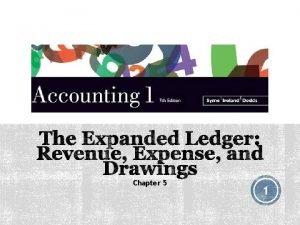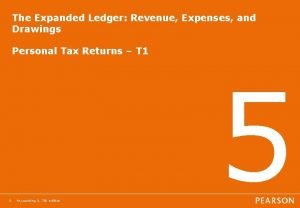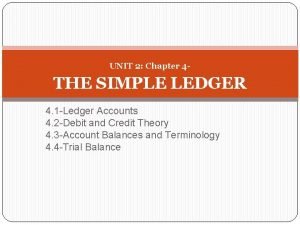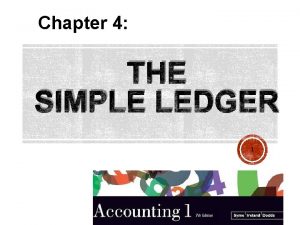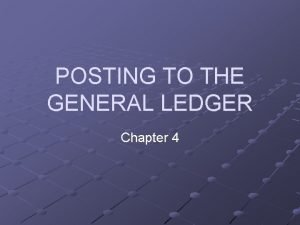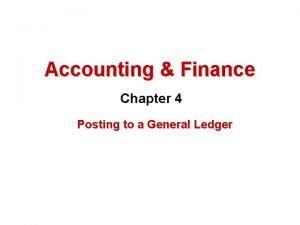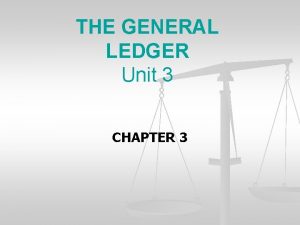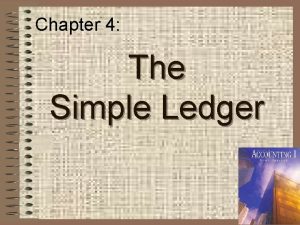Chapter 5 1 Expanded Ledger The Expanded ledger








- Slides: 8

Chapter 5. 1 Expanded Ledger

• The Expanded ledger changes the accounting system for owners equity • Until now any change in equity was recorded in a single account titled owners equity • With this limited amount of information it is difficult to properly analyse a businesses operations

• Accountants need to know what is causing changes in owners equity • By expanding the equity section of the ledger and adding three new account sections accountants can track information more accurately • The accounts fall under the following headings; Revenue, Expenses, Drawings

Revenue • Revenue is the income produced by the sale of goods and services, the purpose of a business is to produce revenue • Revenue is an increase in owners equity and therefore revenue accounts have a credit balance and an increase in revenue would result in a credit entry to the revenue account

Expenses • Expenses are the costs associated with the production of revenue • Rent, wages, fuel, repairs, advertising…. etc are all examples of expenses • An expense is a decrease in owners equity • Owners Equity decreases with debit entries and therefore expense accounts have debit balances

Net Income Net Loss • Through the revenue and expense accounts a business can determine if it has earned profit (net income) or loss (net loss) • By calculating the difference between total revenue during a certain period and total expenses during that same time a business will ether show a net gain or net loss

Drawings • Drawings are the owners taking money from a • • • business for personal use Drawings represent a decrease in owners equity and are therefore recorded as debit entries Drawings do not affect net income or net loss Drawings are deducted after calculating income

GAAP • GAAP matching principle – Each expense item that helped to earn a revenue must be recorded at the same time as the revenue that it helped to be earned • GAAP revenue recognition convention – Revenue recognition convention states that revenue must be recorded in the accounts at the same time the transaction is completed
